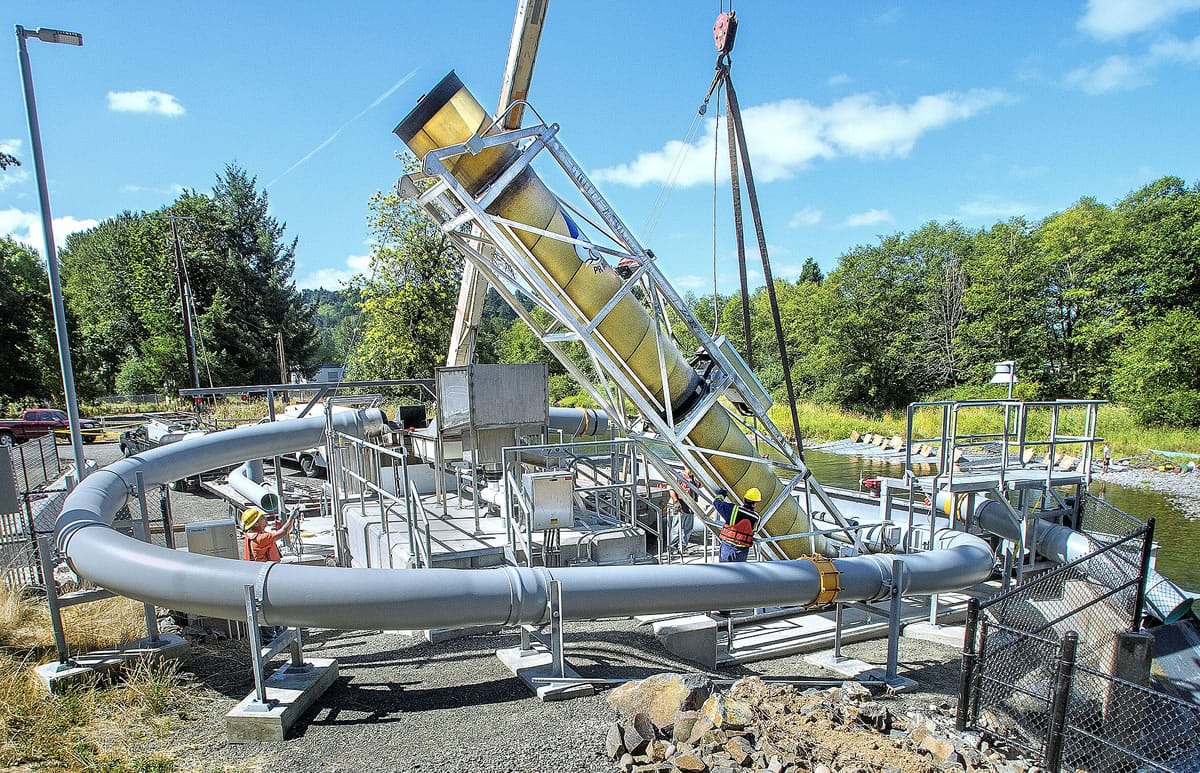On a sunny late summer day, anglers just want the chance to catch fall chinook and steelhead on the Kalama River.
But a boatload of bureaucracy that governs fishing on the river is standing in the way.
Those competing forces have risen to the surface like a thrashing hooked fish in recent meetings held by the Washington Department of Fish and Wildlife.
Much of the controversy is a result of a new $2.4 million fish-sorting device scheduled to go into operation.
It will drastically reduce the number of hatchery fall chinook that reach the river’s most popular fishing holes. The idea is to prevent them from mingling with what biologists consider “wild” fish.
With the new structure, only about 700 hatchery fall chinook will be passed upstream out of an expected 2015 run of 18,000 fish.
“You’re not in touch with people who fish on the river,” Mike Lowry, an avid fisherman who lives on the Kalama, told state biologists at a late July meeting in Vancouver.
But biologists say they must adhere to guidelines set by several agencies.
The Department of Fish and Wildlife manages the river under the scrutiny of the National Marine Fisheries Service.
Fishing regulations and hatchery practices are established in the Hatchery and Fishery Reform Policy and the Lower Columbia Salmon and Steelhead Recovery Plan, and the Hatchery Scientific Review Group has a say.
The state must follow what the feds dictate, said Cindy LeFleur, Southwest Washington fish program manager. Otherwise, “we wouldn’t be able to get our permit” to operate the Kalama hatchery, she said.
And the federal agency that grants permits to operate hatcheries also controls their funding, said Eric Kinne, hatchery reform coordinator for WDFW.
“So if you don’t meet the standards, they’re not going to give us the money to be able to raise the fish,” Kinne said.
The Kalama isn’t the only river where hatchery policies have changed since the state’s Fish and Wildlife Commission adopted the Hatchery and Fishery Reform Policy in 2009.
Since then, “we’ve reduced hatchery production all over the place” so hatchery fish don’t compete with wild ones, LeFleur said.
Studies have shown that hatchery fish compete for habitat with wild fish that are listed under the federal Endangered Species Act.
A principal goal of hatchery reform policies is to prevent hatchery fish from mixing with wild fish to give the endangered wild fish a better chance of recovering.
The department has installed weirs in about half a dozen local rivers. The weirs stop fish headed upstream, allowing hatchery workers to collect and sort them.
Wild fish are allowed to go upstream to spawn. Hatchery fish may be turned back.
Workers are putting the final touches on a sorting device near the Modrow Bridge.
It’s more than a weir. It has a much bigger trap box than the facility it replaces.
Fish will be lifted out of the trap by a corkscrew device called a “pescalator” to a table where hatchery workers can sort them.
Fish will be sent through tubes upstream, downstream or into tanker trucks that can carry them to the Kalama Falls Hatchery.
The new Kalama fish sorting station will allow hatchery workers to sort all the fish that arrive. The previous facility allowed many fish to swim by.
WDFW originally considering stopping all the hatchery fall chinook at the sorting station.
But after hearing anglers at the meeting in July, they agreed to allow 700 hatchery fish to swim upstream out of about 18,000 fall chinook expected at the river’s mouth, which are mostly hatchery fish. The daily fishing limit will be increased from two to three hatchery fish.
“You’ve got a $2.4-million show piece you’re dying to show off,” Lowry said.
Several anglers said stopping fish at the weir will end up killing them, especially steelhead, considering the high temperatures in the river this year.
Several fishermen at the meeting questioned the validity of calling fish “wild” when they’re the descendents of hatchery fish.
LeFleur admitted that what are called “wild” fish on the Kalama are very similar if not the same genetically to hatchery ones, but biologists still are working to create an ongoing line of natural-spawning fish because they survive better in the wild.
“We have to start somewhere to rebuild that population,” Kinne said.
Another river of contention is the Washougal, where a weir has been in place since 2011.
WDFW has reduced the annual release of fall chinook in the Washougal from 3 million to 900,000, with the remaining 2.1 million being released instead into Young’s Bay near Astoria.
Some anglers at a meeting last week complained that those fish will mostly benefit commercial fishermen, but WDFW biologists said fish released in Young’s Bay can also be caught by sport anglers in the ocean and the Buoy 10 area.



